The following is a digital presentation of Brass City/Grass Roots: The Persistence of Farming in Waterbury, Connecticut, a traveling exhibition on the history of farming in Waterbury, Connecticut, developed by Dr. Ruth Glasser and put on display at the University of Connecticut Dodd Research Center, University of Connecticut Waterbury Library, and Waterbury Green.
Click on one of the following images to learn its story or take the tour in its entirety by clicking “Next” at the bottom of the page.
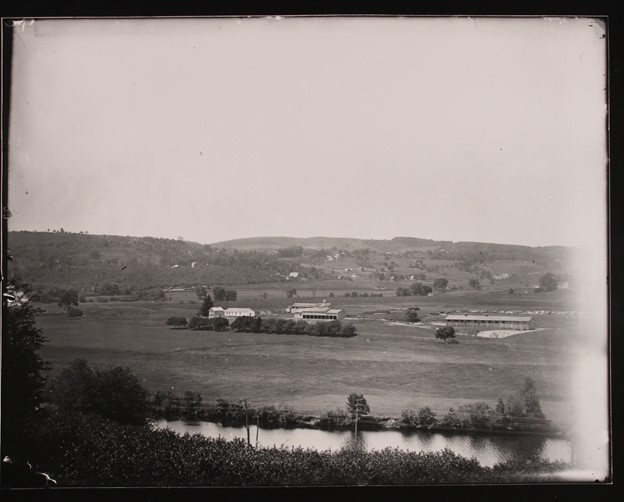 |
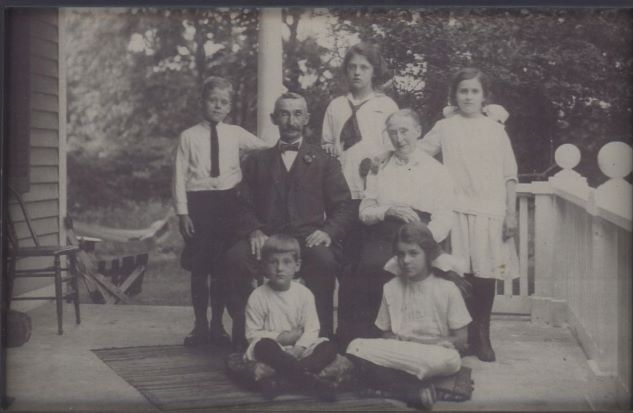 |
 |
||
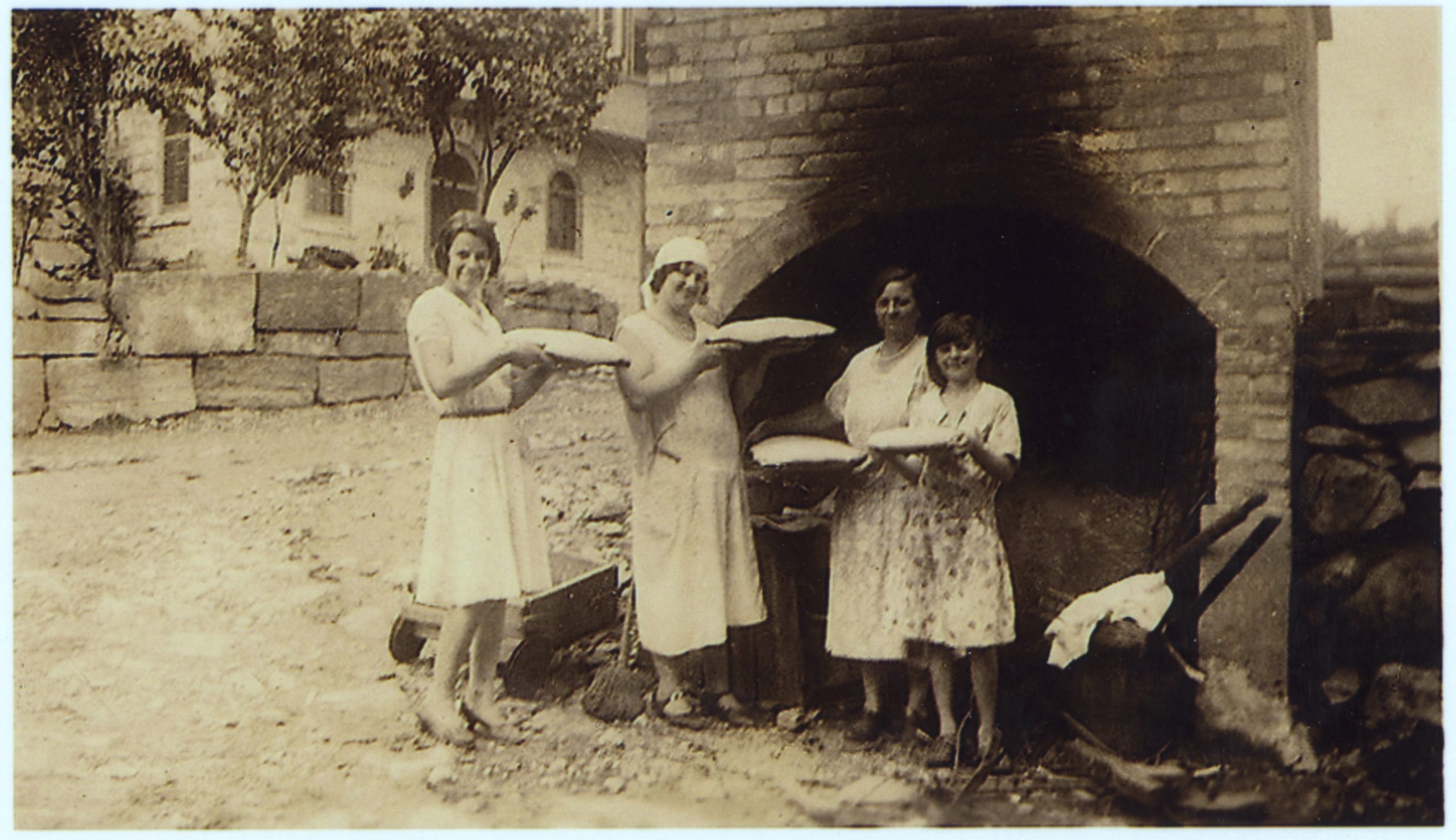 |
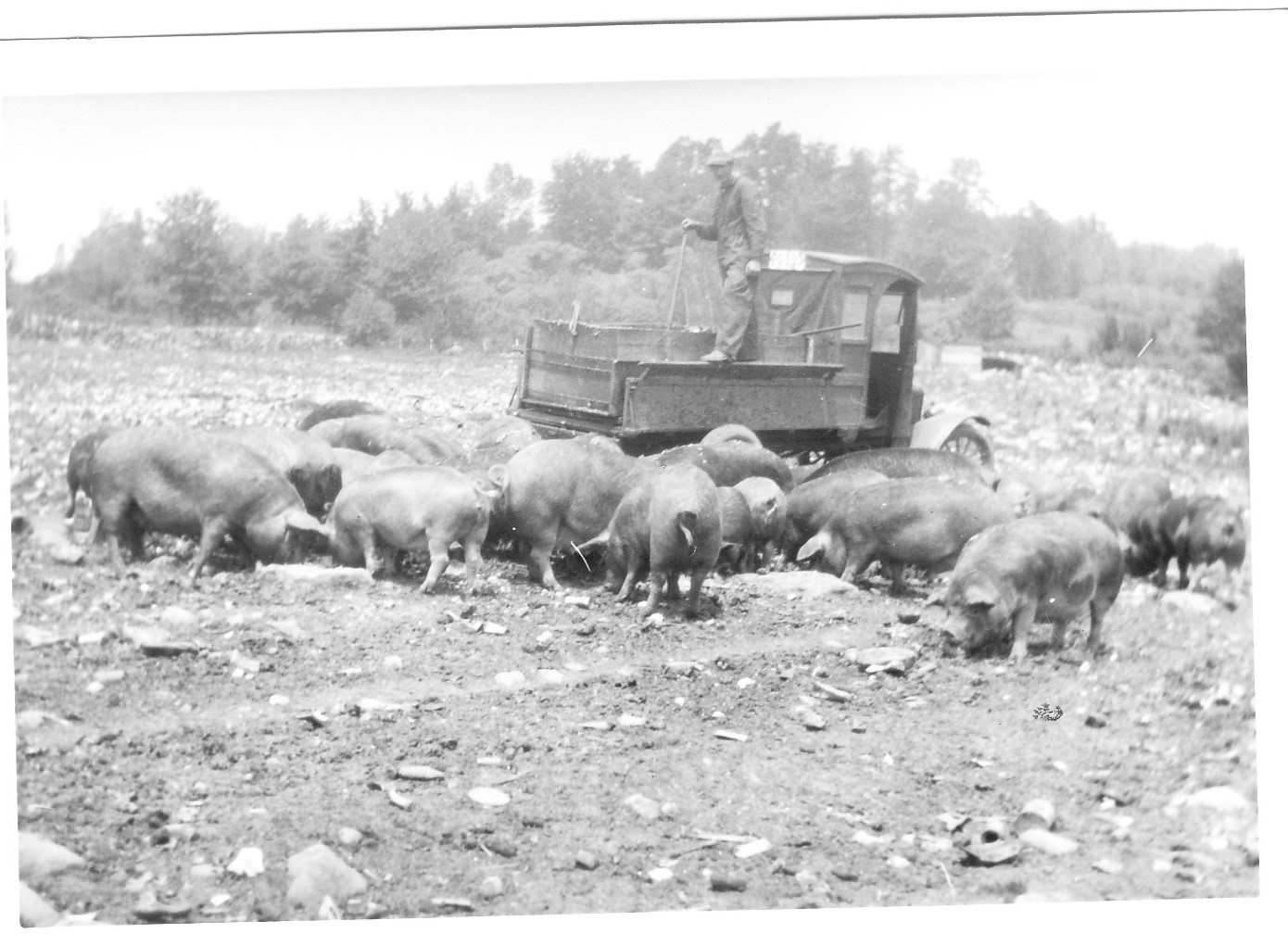 |
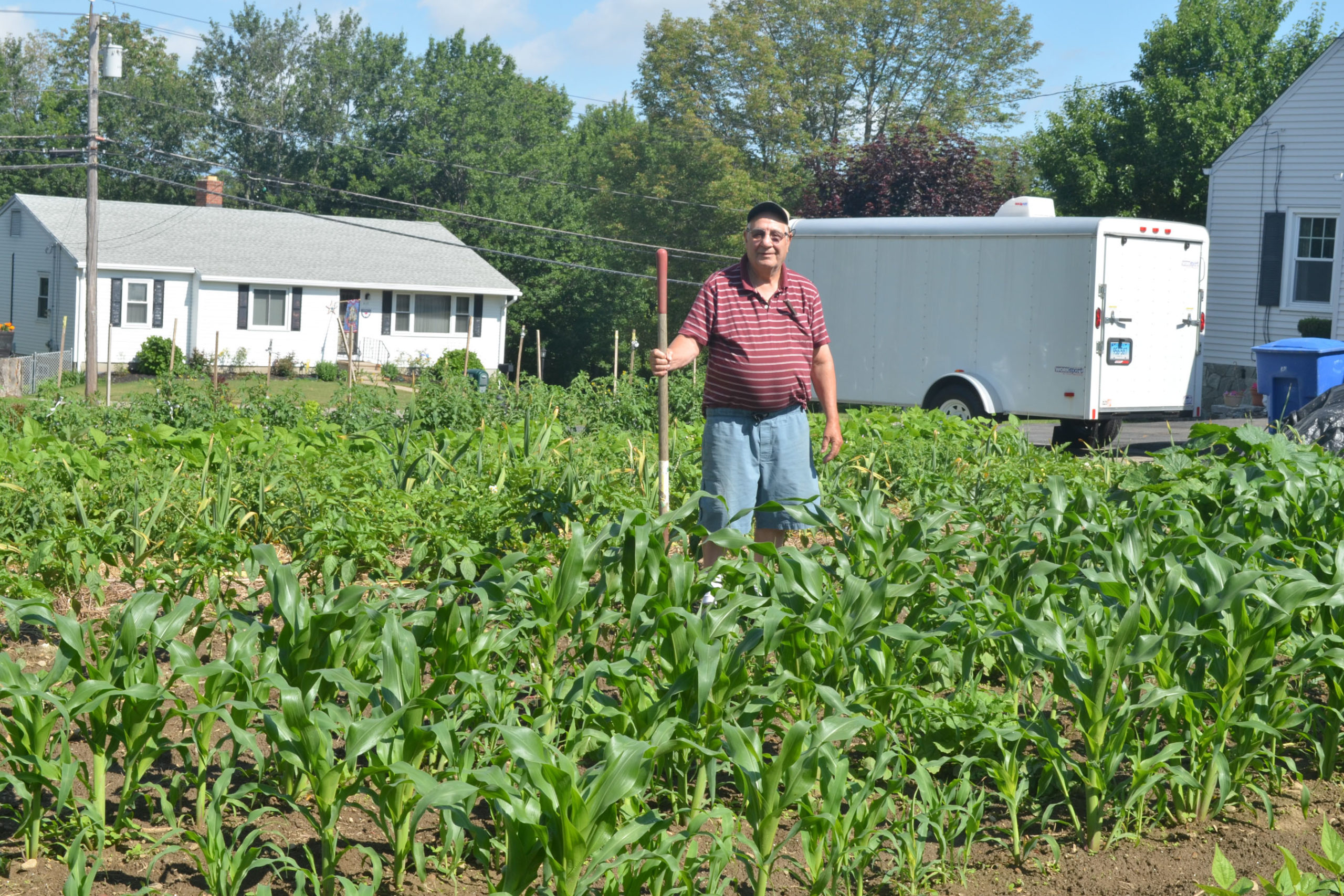 |
||
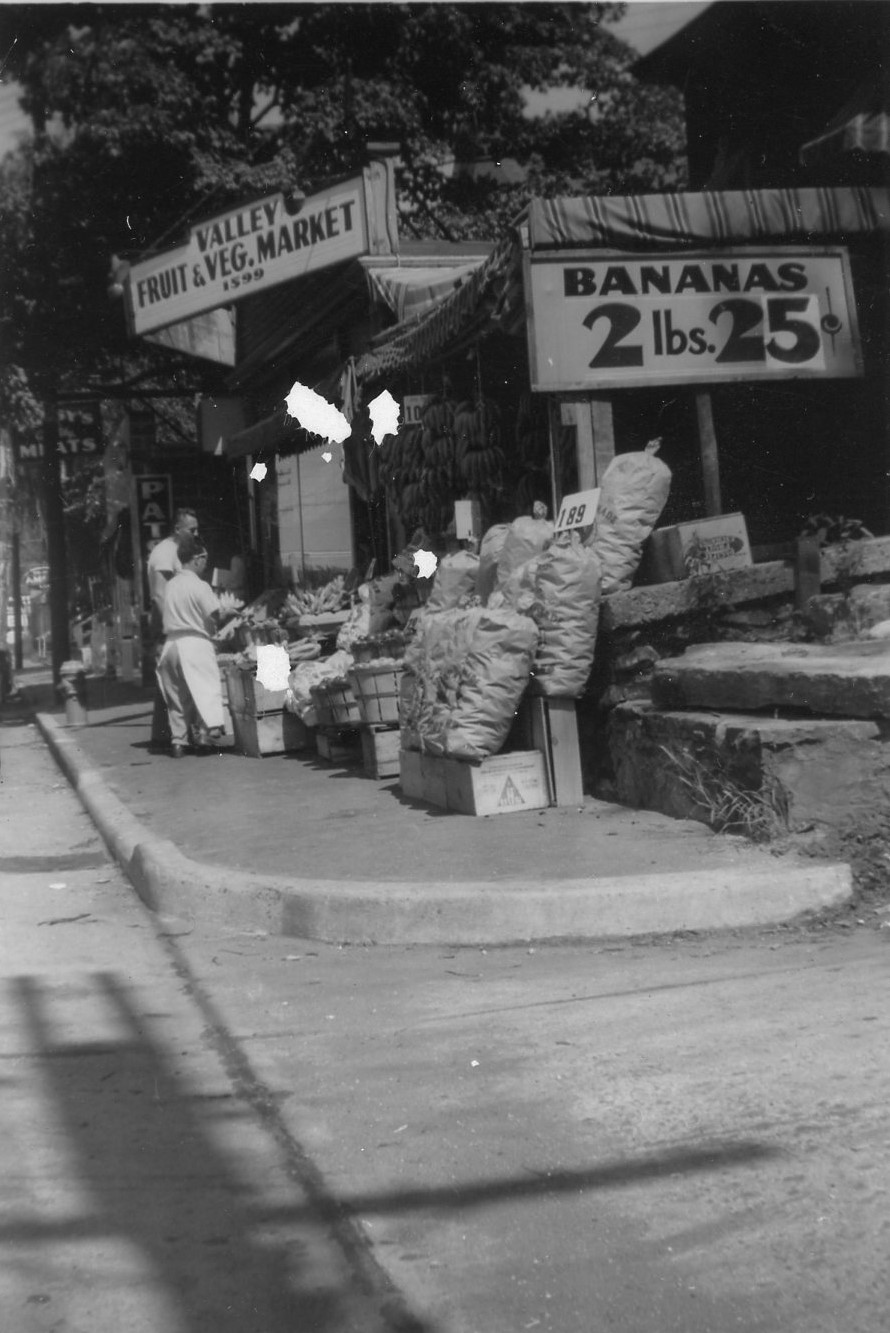 |
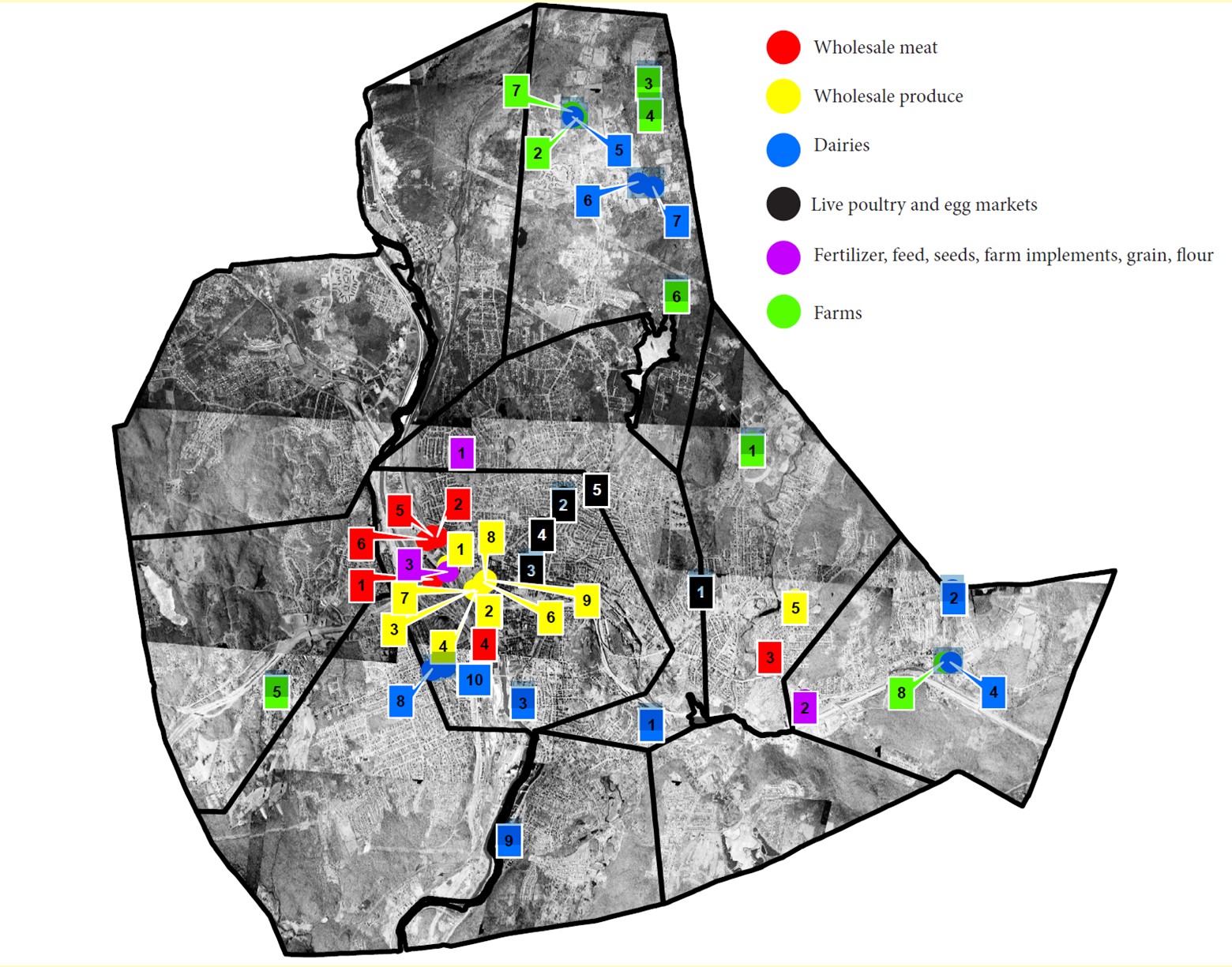 |
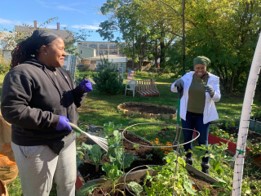 |
Even within urban, industrial Waterbury, farming has had its place both as a type of work and a way of life in which whole families have been involved. Farming did not disappear after the Revolutionary War or when the first factories began to appear. But farmers have had to constantly reinvent themselves as they faced hilly land, rocky soil, mechanization, and competition in an increasingly tough regional, national, and international market. They have creatively combined farming with other enterprises in order to stabilize their income and still have access to fresh food. Long before the term “recycling” was invented, they were reusing the materials they found around them. And they had a surprisingly symbiotic relationship both with other farmers and with the city life that increasingly surrounded them.
This exhibit is a tour of Waterbury’s agriculture, food processing, and marketing sectors. Lurking still in unexpected pockets of our city are the traces of agriculture—past, present, and even future. Knowing what has come before—and what still exists—can help us to imagine a future in which Waterbury once again produces much of its own food, creating jobs and revitalizing neighborhoods in the process.
Thank You…
This exhibit was made possible by the labors of many people and institutions including Sue Pronovost and Brass City Harvest, David Perrier, Jessica Callahan, David Becker and the students of HIST 2100: The Historian’s Craft, Fall 2013 at the University of Connecticut/Waterbury Campus, the Silas Bronson Library, the Osher Lifelong Learning Institute at UConn/Waterbury, the Mattatuck Museum, Stone Soup, Inc., Georgia Sheron, Tony Gugliotti, Suzie Fateh, Judy Kollias, John Wiehn, Ken Killer and Brenda Anderson Killer, Phil Benevento, William Pierpont, Joanna Clapps Herman, James Cronin, Wesley Rasmussen, and the many other people who agreed to be interviewed and to donate images and stories. Also to be thanked are Cathy Stanton, Anna Ascione, Lois Seulowitz, Zachary Keith, Ali Sina Moravej, Derek Pettinelli, Danny Becce, Beatrice Becce, Beatrice Avcollie, Toni Padula, Karen Padula and many other members of the Becce family, Bill Pierpont, Robert and Marie Bosse, Henry and Gloria Bosse, Tony and Ann Dellorfano, Bill Gagliardi, Bonnie Rasmussen, Departments of Health and of Planning and Zoning, City of Waterbury, Antoinette “Chick” Spinelli and the Town Clerk’s Office, Waterbury, Anne Marie and Anthony Summa, Eddie Onofrio, Charlie Antonelli, Donald and Eva Porzio, Susan Kather, Josh Angelus, Sam Gucciardi, Marion Hubbard, Martha Payne, Nick Coscia, Sande O’Donnell, Earl and Eva Sills, Tim Upson, Tony Calli, Walter and Bob Wadman, Theresa DeLaurentis, Larry Rifkin, Anita Bologna, Carrie MacMillan, Betsy Pittman/Dodd Center at University of Connecticut, Connecticut State Library, Connecticut Historical Society, Shelley Goldstein, Document Production Center at University of Connecticut, Dana Lucisano, Bill DeMaida, David Vaught, Kenda Davis, Vickie Bomba-Lewandoski at Connecticut Agricultural Experiment Station.
Funding was provided by the Connecticut Humanities Fund and its Connecticut at Work grant program, the Waterbury Environmental Health Fund and the Connecticut Community Foundation.
Note: ConnecticutHistory.org does not edit content originally published on another platform and therefore does not update any instances of outdated content or language.









